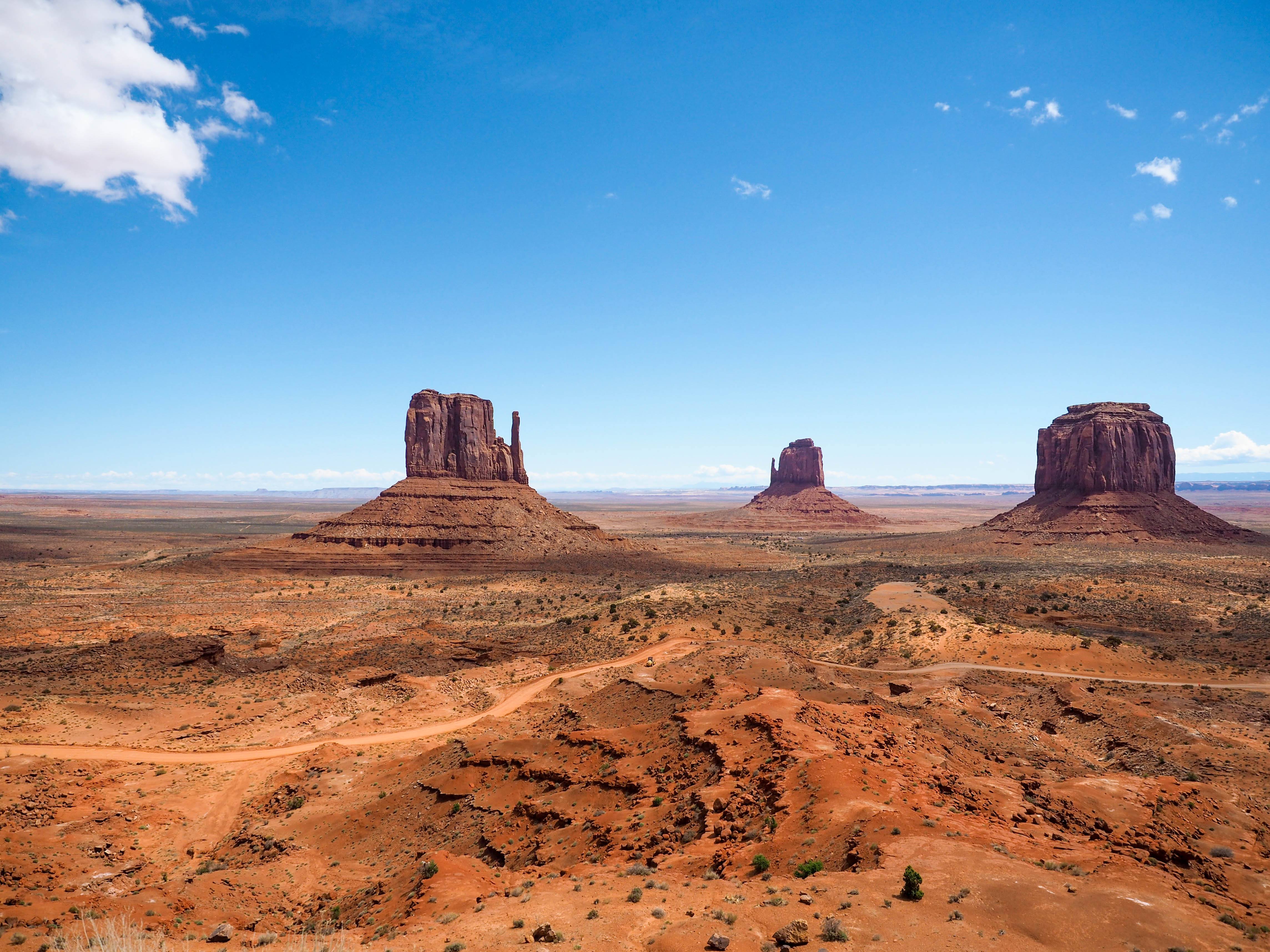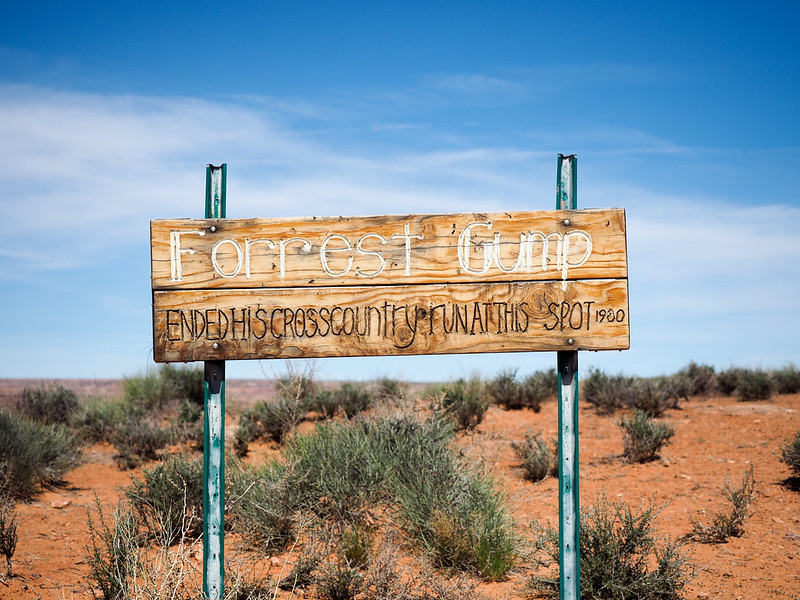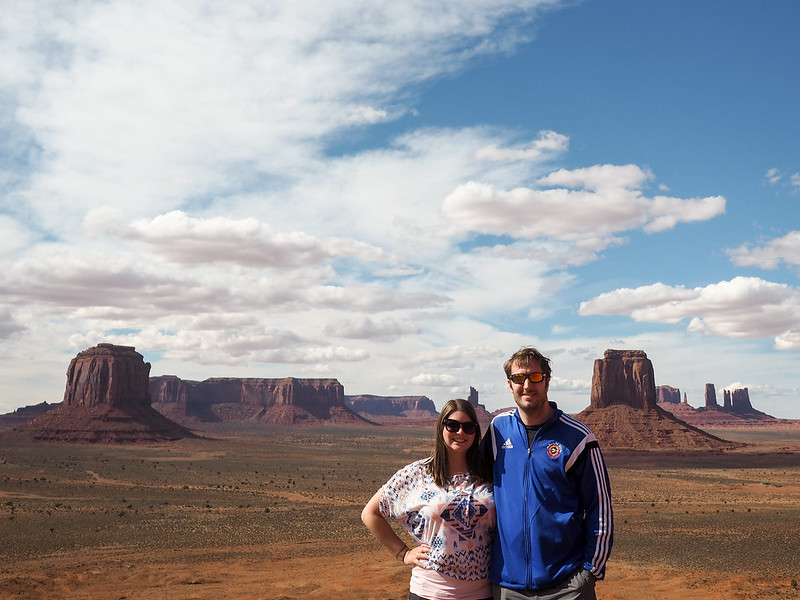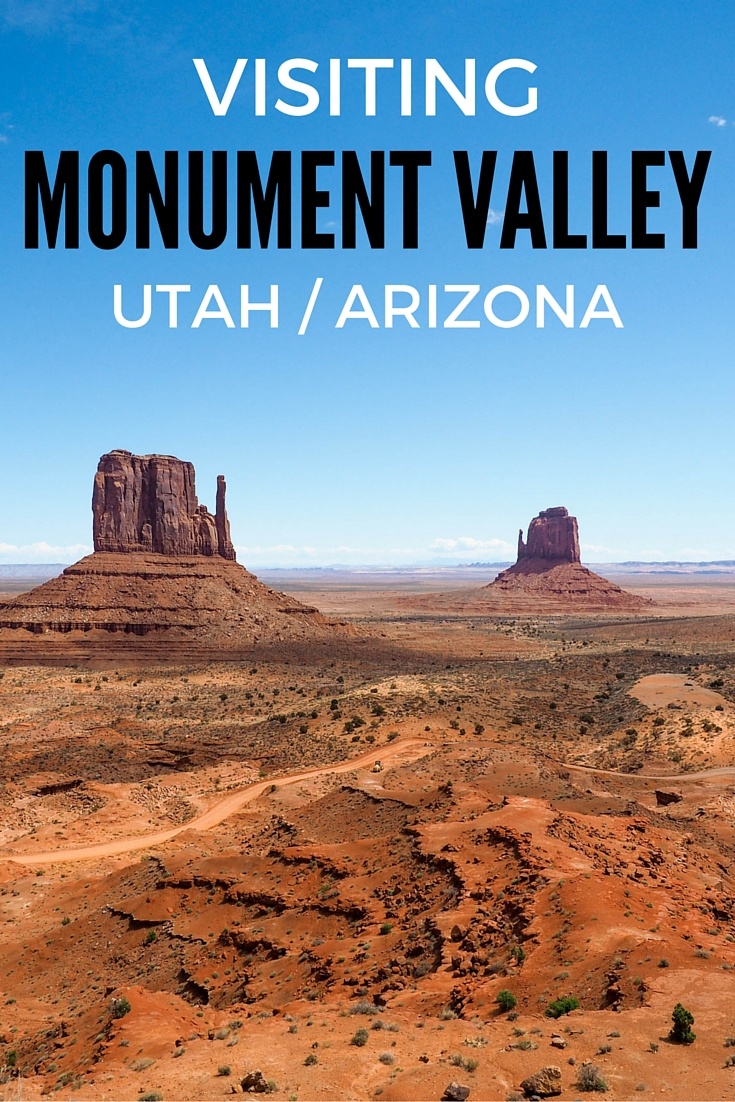Monument Valley: A Must-Visit in the American Southwest

The American Southwest has a lot to offer, from Utah's amazing national parks to quirky Route 66 attractions to ancient pueblos to the Grand Canyon.
But if you ask me for my top must-go place in this part of the U.S.?
I'll tell you that it has to be Tsé Biiʼ Ndzisgaii, also known as Monument Valley.
First, there's the fact that Monument Valley is one of the most stunning parts of the Southwest. And, secondly, it's got some fascinating history and culture connected to it, too.
In its description of Monument Valley online, Utah.com says this: “Monument Valley isn't a national park. It's not even a national monument. But it's as American as it gets.”
That last sentence makes me chuckle a bit. Monument Valley IS just about as American as it gets – if you define “American” as a rather complex relationship between Native Americans and the Europeans who eventually settled on their land, with a little bit of Hollywood thrown in. (Yep, we're getting real here, folks.)
Monument Valley history
The reason why Monument Valley isn't a national park or monument is because it's a Tribal Park owned by the Navajo Nation. The 92,000-acre park straddling the Utah and Arizona border – with an official Navajo name of Tsé Biiʼ Ndzisgaii – was the first of its kind ever formed in the United States. It's run by the Navajo similarly to how the National Park Service runs America's federally protected lands.
Land for the tribal park was first set aside in 1958 after Monument Valley shot into the consciousness of just about every American thanks to Hollywood.
But, let's back up a bit. Hollywood, you ask?
Monument Valley has always been an off-the-beaten-path destination – for white people, at least. Native people have been living in the area for thousands of years – first the Anasazi, and then the Navajo, who still live on the land – but few others ventured into this vast expanse of red soil and sandstone until fairly recently.
The Spanish don't seem to have ever found it, and even early intrepid American travelers skipped this part of the U.S., usually heading for the Rocky Mountains instead.
They clearly didn't know what they were missing out on.
It wasn't until a Colorado transplant living near Monument Valley pitched the area as a filming location that outsiders began to take notice.
In 1938, Harry Goulding (who owned a small trading post on the north end of Monument Valley) took some panoramic shots of Monument Valley to studio execs in Los Angeles. He was almost turned away, but instead ended up showing his photos to director John Ford – and the rest is cinematic history.
Ford ended up shooting seven different Westerns in Monument Valley, including Stagecoach in 1939, which propelled John Wayne to stardom and popularized the Western genre.
Before long, Monument Valley became “the West” in many Americans' minds. By now, countless movies, TV shows, and even commercials have utilized the valley's iconic sandstone buttes as backdrops.
Visiting Monument Valley
Note: Indigenous communities have been disproportionately affected by COVID-19, and the Navajo Nation closed its lands to all visitors through mid-July 2021. Tribal parks are once again open (as of January 2022), but this is subject to change. Please check the official Monument Valley website if you're planning a trip. Masks are required to be worn by all visitors.
Elliot and I added Monument Valley to our Southwest road trip itinerary, wedging it neatly between Moab, Utah, and Page, Arizona.
Driving towards the valley on U.S. Highway 163, I made him stop a couple times for the iconic “Monument Valley road shot” – you may also recognize this as where Forrest Gump ended his cross-country run.

We entered the Monument Valley from Highway 163 on the Utah side of the park, stopping at a toll booth to pay the $20-per-car entrance fee. From there, we popped into the new visitor center briefly, had a lunch of some leftover pizza that we brought with us, and then met up with our guide from Navajo Spirit Tours.
Should you take a tour at Monument Valley?
Visitors to Monument Valley used to have two choices when it comes to exploring the park: they could either drive the 17-mile loop road on their own, or they could book a spot on a Navajo-operated tour to see a lot more.
As of early 2022, however, the self-drive option is limited to just a few cars per hour because of pandemic-related capacity restrictions. If you want to be guaranteed to be able to see Monument Valley, you'll want to book a guided tour.
Even though a guided tour was not required back when Elliot and I visited, we still opted to book one with Navajo Spirit Tours.. Not only did it let us go beyond the loop drive, but it also meant we got to learn a lot more about Monument Valley than we could have by driving it on our own.
We met our guide/driver, Loyal, near the demonstration hogans near the visitor's center. These traditional Navajo dwellings are for display purposes only, but Loyal told us of the hogans that his family lived in when he was younger – because people DO still live in traditional homes like this, even within Monument Valley.
Soon, we headed out onto the loop drive, stopping for a few photo opportunities before heading down the dirt road that can only be accessed by a Navajo guide.
Our backcountry tour took us to rock formations and arches with names like Thunderbird, Sleeping Dragon, and Ear of the Wind.
We stopped in a half-cave to listen to pan flute music and see ancient Anasazi petroglyphs.
We saw rock formations that have featured in TV commercials and movies, including the bit of rock Tom Cruise climbed up in Mission Impossible II.
And, the whole time, our guide talked to us about both the history of Monument Valley and the area's current place in the narrative of the Navajo Nation.
As far as I'm concerned, taking a tour is a must at Monument Valley.
Here are some tour options you can book online in advance:
- 2.5 Hour Guided Tour of Monument Valley
- 3.5 Hour Monument Valley Tour
- Sunrise Tour of Monument Valley
- Sunset Tour of Monument Valley
Modern Monument Valley and the Navajo Nation
It was as we were taking a break from the truck near the Totem Pole rock formation that Loyal started talking about modern Navajo politics, telling us about the tension that exists between the tribal elders and the modern development that's threatening to change Monument Valley forever.
It started, you could say, with Harry Goulding, when he built his trading post on the edge of Monument Valley in the 1920s and then pitched the area to Hollywood. By the 1950s, Goulding's had become a full-fledged motel with a restaurant to serve both film crews and tourists, and today is still the hub for most tourism into Monument Valley.
And, while Goulding got along well with his Navajo neighbors (and while it's true that many of them didn't mind being extras in all those Western movies), the fact of the matter was that it was an outsider that opened up Monument Valley to the world.
In 2008, the first hotel opened within Monument Valley. Called simply The View, the project was controversial from the start.
Even though the hotel (and then visitor center) were supported by native bodies, the project was really the brainchild of Art Ortega, whose family owns a “trading post” empire that includes gas stations, souvenir shops, and jewelry stores throughout the Southwest.
Art Ortega is not Navajo, and the fact that the biggest business in Monument Valley is now technically out of Navajo hands does not sit well with many of the locals who have been trying to build businesses here for decades.
I realize that we were only hearing Loyal's side of the story and that I can't fully understand the politics going on there since I'm a white girl from Ohio. But this story isn't unique to Monument Valley; this is just one of many examples of how Native Americans have been marginalized and denied opportunities, sometimes even on their own land.
Loyal said that there are many local Navajo who would like to completely restructure how the Monument Valley Tribal Park operates, in order to keep more control and regulation (and money) in Navajo hands.
I've written before about how poorly Indigenous peoples have traditionally been treated in the U.S., so hearing such a strong vote for self-efficacy from Loyal actually made me really happy.
Sure, it would make it more difficult for tourists to visit Monument Valley if they set stricter limits on how and when people could see the park. But I personally think it would be worth it, so long as it meant that the traditions and stories of Monument Valley were protected and preserved.
Because even though many people associate Monument Valley solely with its landscape, the park has so many more stories to it if you just take the time to look and listen.

How to visit Monument Valley
Want to visit Monument Valley yourself? Here are some tips:
WHERE: The only entrance to Monument Valley is off U.S. Highway 163 in Utah, between the small towns of Mexican Hat and Kayenta. It's about 2.5 hours from Moab, Utah, and about 2 hours from Page, Arizona.
HOW MUCH: Entry to the Tribal Park is $20 per car for vehicles holding up to 4 people (it's $10 per person beyond 4). Guided tours (which are now required to visit all parts of Monument Valley) are extra.
TOURS: Elliot and I opted to do a guided backcountry tour so we could see more of Monument Valley. We booked an afternoon tour of the valley with Navajo Spirit Tours, which cost $75 per person. The “classic” Monument Valley tour is the most popular, though most companies also offer tours to places like Mystery Valley, Hunts Mesa, and Teardrop Arch if you want to get off the beaten path.
We did not receive any discount or a free tour or anything like that – we paid full-price and I can highly recommend Navajo Spirit Tours. Our guide was both professional and super knowledgable. He also took the nice photo of Elliot and I that you see above!
WHEN TO GO: Monument Valley is open to visitors every day of the year except Christmas and New Year's Day. It's busiest during the summer and school holidays. The morning is great for backcountry tours as you get nice light on many of the arches and rock formations, though the afternoon isn't bad, either (95% of the photos in this post were taken between 1 p.m. and 5 p.m.).
WHERE TO STAY: There's only one hotel inside the boundary of the tribal park, and that's The View (which is exactly what you'll be paying for). Goulding's Lodge is just outside the entrance and is almost like a small village itself. Unfortunately nothing else is very close. You can stay in Kayenta or Mexican Hat, or check out the Desert Rose Inn & Cabins in Bluff, Utah (roughly 40 miles from Monument Valley).
READ NEXT: 25 Things to Do in the Southwest USA to Put on Your Bucket List
Have you ever been to Monument Valley? If not, is it somewhere you'd visit on a road trip through the Southwest?
Pin it for later:


Amanda Williams is the award-winning blogger behind A Dangerous Business Travel Blog. She has traveled to more than 60 countries on 6 continents from her home base in Ohio, specializing in experiential and thoughtful travel through the US, Europe, and rest of the world. Amanda only shares tips based on her personal experiences and places she's actually traveled!



























I have a mini van. Can it withstand the drive through Monument Valley, or would the van be too low?
Hmm good question. The scenic drive is not paved, and there are definitely some bumpy parts where you might have clearance issues if you van rides low. (Also note that if you self-drive you can only drive the 17-mile loop, not go into the back country at all.)
Cool pics. The Ear of the Win is particularly nice.
Hey Amanda, Great article. Thanks for sharing your experiences. I am visiting the monument valley next month. I guess Navajo Spirit tours also have special ‘Photography Tours’ which is close to $300 for sunrise and sunset (per person) as opposed to ~$180 for regular sunrise and sunset tours. I love photography but not sure if it is worth spending $120 extra. Any inputs would help!
Thanks a lot! Keep blogging!
I’m afraid I didn’t do a photography tour (or a sunrise/sunset tour, for that matter!), so I can’t speak to which of those might be better. Our Navajo Spirit guide did know about cameras/photography, but if you already know what you’re doing I’m not sure that a dedicated photography tour would be necessary at this particular site.
Amanda,
So glad I found your story about Monument Valley. My husband and I plan to visit in October. Your post has sealed the deal for us to take a tour with Navajo Spirit Tours. I look forward to reading more about your adventures.
That’s great to hear, Barbara! I don’t think you’ll regret going with a guide – you get to see and learn so much more!